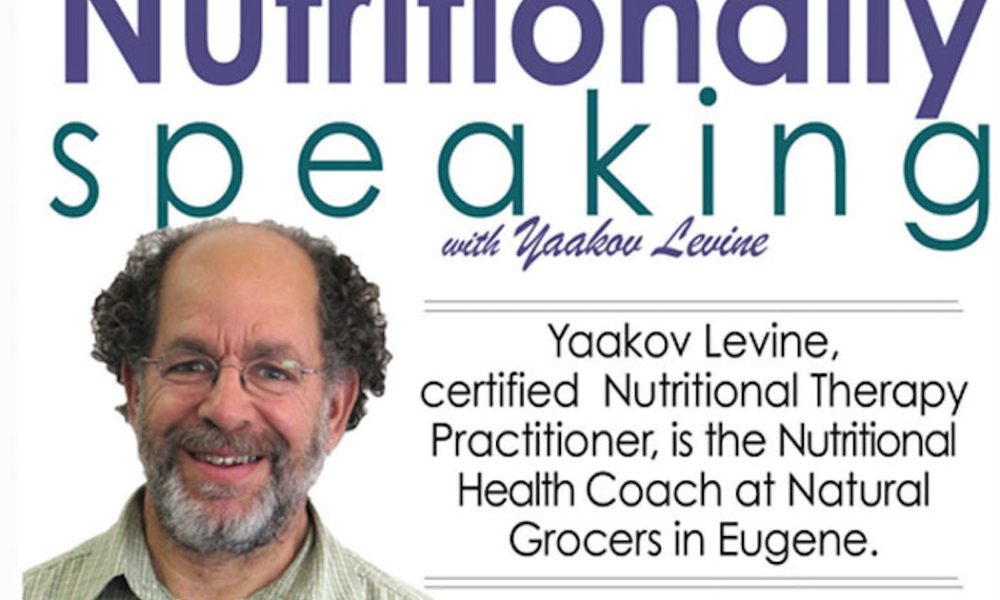
As I write this it is almost September, drizzling outside, a chill is in the air and my thoughts go to soups, stews and that favorite breakfast of many champions: oatmeal. Many folks these days are switching to a higher fat, and lower carbohydrate diet, something along the lines of the popular Ketogenic diets, and may not want to read further. I’ll be offering Keto 101 on Sept. 30 at 2 p.m. at my store.
As we inch towards Fall, it’s comforting to start the day with a bowl of steaming oatmeal. Many of you enjoy oats in your favorite (it says right on the label that they are healthy) snack bars, as well as in your breakfast bowls. Our drive for these ”comfort foods,” along with an increased percentage of our diet that is abundant in processed foods, has been creating a national health crisis. Raise your hands if you have been diagnosed with osteoporosis or osteopenia, or have cardiovascular disease? In my work I regularly talk to people, mostly women, that come to me with these troubling bone health and cardiovascular issues.
We have been taught to believe that if we regularly consume dairy products, and maybe even take our calcium pills, we have nothing to worry about. There are prescription medications for bone density available that maybe some of you who raised your hands earlier are taking, so why be concerned? But what if by preparing our grain and beans correctly, we could prevent this health challenge in the first place?
Properly prepared grains are a healthier choice and will give us energy for the whole morning! Naturally occurring phytates or phytic acid (the storage form of phosphorus) in grains can interfere with mineral absorption, and may get in the way of our digestion of the oats – I’ve included a recipe for proper oats/grain preparation below.
Phytic acid is present in grains – especially in the bran or outer hull; phytates are also found in beans, tubers and trace amounts occur in certain fruits and vegetables, like berries and green beans. Up to 80 percent of the phosphorus – a vital mineral for bones and health – present in grains is locked into an unusable form as phytate. When a diet including more than small amounts of phytate is consumed, the body will bind calcium to phytic acid and form insoluble phytate complexes. The net result is you lose calcium, and don’t absorb phosphorus. Imagine this scenario: You eat your meal, where the produce and dairy included were great sources of calcium; you then take your calcium supplements, imagining strong bones into the future; but, unfortunately, due to the grains in your meal, you are instead potentially inching towards osteoporosis – think mineral rich poop.
Research suggests as well, that we will absorb approximately 20 percent more zinc and 60 percent magnesium from our food when phytate is absent. These minerals are needed to support healthy bone metabolism. Our bones are constantly breaking down and rebuilding, and without minerals and protein, we will often have poor results later in life when we get our bone density tested.
Properly prepared, your grain will be a nutritious (soaked and phytate free) addition to any meal, and this is really simple. Do try this at home!
See below for preparation tips:
I like this recipe because I’m planning ahead for the next day. I put the oatmeal to soak right before I go to bed. Note: It makes the early morning rush go so much better when breakfast is planned ahead. I prefer rolled oats, but this recipe will work with other grains, such as steel cut oats, grits, kamut, spelt, wheat, rye and teff.
2 cups of oatmeal is about 4 servings, or 2-3 servings if cooking for big eaters.
This recipe can be halved or doubled easily.
The oatmeal also keeps well for the next day, or can be added to cookies and muffins, (a better choice than those bars mentioned above).
Remember to prepare the night before, and put the cooking pan with water on the stove, ready for the oatmeal in the morning, saves time!
Ingredients:
1 cup oats, whole, rolled or cracked (NOT the quick cooking kind, but ”old fashioned”)
1 cup warm water
2 tsp. whey, plain whole milk yogurt, kefir or buttermilk (use 1 tsp. apple cider vinegar or lemon juice to make this dairy free
1cup water
½ tsp. sea salt
1 Tbsp. flax seeds ground into meal, or Chia seeds (optional) (for fiber and Omega-3 fats)
Raw sugar or real maple syrup (grade B) to sweeten (optional)
Touch of butter, ghee, cream or milk, optional, but especially good for the kids
1-2 Tbsp powdered gelatin/collagen for added protein. (optional)
For balanced blood sugar, digestive support and warming effects add cinnamon
Preparation:
Mix the oats with warm water and whey or yogurt, cover and leave in a warm place such as on the stove, (NOT the fridge) for at least 4 hours and as long as 24 hours [overnight is fine]. In the morning, bring an additional cup of water to a boil with the sea salt. Add the soaked oats, reduce the heat, cover and simmer several minutes. For the addition health benefits of added gelatin/collagen, whisk in with a fork a tablespoon or two of gelatin into your simmering oats. Gelatin is a source of collagen that supports strong bones, joints and youthful skin. Research shows us that gelatin supports our body’s metabolism of the protein (avenin) present in oats, making your bowl of oats an even better, more nutritious choice.
Remove from heat, stir in optional flax seeds and let stand for a few minutes. When properly soaked these whole oats will cook as fast as the ”quick” oats, with much more nutritional benefits. Serve with the ghee (clarified butter), butter or cream, raw sugar, grade B maple syrup, or local raw honey. Enjoy!!







